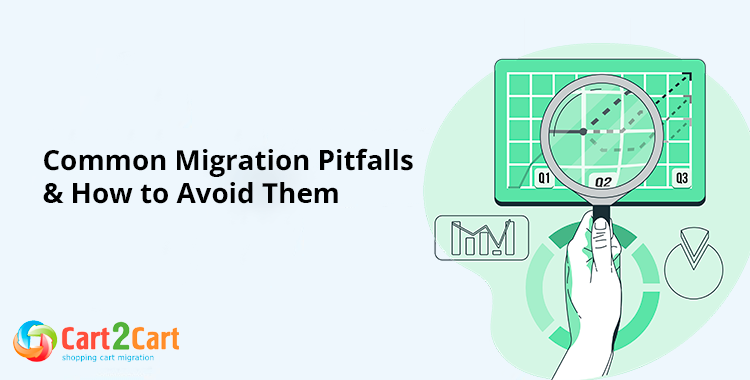 Migrating your eCommerce store to a new platform can be an exciting step toward growth, but it also comes with potential risks. A poorly executed migration can lead to lost data, broken links, SEO drops, and operational disruptions. To help you avoid these challenges, this article explores common migration pitfalls and how to prevent them.
Migrating your eCommerce store to a new platform can be an exciting step toward growth, but it also comes with potential risks. A poorly executed migration can lead to lost data, broken links, SEO drops, and operational disruptions. To help you avoid these challenges, this article explores common migration pitfalls and how to prevent them.
1. Lack of Proper Planning
One of the biggest mistakes businesses make is rushing into migration without a structured plan. Without a clear roadmap, you may encounter unexpected issues such as missing data, improper URL structures, or incompatibilities with third-party apps.How to Avoid It:
- Create a detailed migration checklist that covers all aspects, including product data, customer information, and SEO elements.
- Assign clear responsibilities to your team members or external migration specialists.
- Test the migration on a demo site before implementing it on your live store.
2. Incomplete Data Transfer
Data loss is one of the most common migration issues. Missing product descriptions, images, orders, and customer details can disrupt your store’s functionality and affect customer experience.How to Avoid It:
- Perform a full backup of your existing store before starting the migration.
- Use a reliable migration tool like Cart2Cart to ensure all data is transferred securely and completely.
- Conduct a post-migration audit to verify that all essential data has been moved correctly.
3. SEO Ranking Drops
Migrating to a new platform can cause a temporary decline in search engine rankings if URLs, metadata, and internal links are not properly redirected.How to Avoid It:
- Set up 301 redirects from old URLs to new URLs to maintain SEO equity.
- Retain metadata, alt tags, and structured data during the migration.
- Submit an updated XML sitemap to Google Search Console immediately after migration.

4. Incompatible Third-Party Integrations
Many businesses rely on third-party apps and plugins for payment processing, email marketing, inventory management, and customer support. Some of these integrations may not be compatible with your new platform.How to Avoid It:
- Research the new platform’s app ecosystem to ensure compatibility with your existing tools.
- Identify alternative apps if your current integrations are not supported.
- Test all integrations post-migration to verify functionality.
5. Customer Experience Disruptions
A poorly executed migration can lead to broken pages, slow load times, and checkout issues, frustrating customers and resulting in lost sales.How to Avoid It:
- Schedule the migration during off-peak hours to minimize disruptions.
- Keep customers informed about the migration process and potential downtime.
- Conduct thorough user testing to identify and fix any performance issues before going live.
6. Ignoring Mobile Optimization
With a growing number of shoppers using mobile devices, failing to optimize your new platform for mobile usability can hurt conversions and customer satisfaction.How to Avoid It:
- Choose a responsive theme or template that adapts to different screen sizes.
- Test your new store on various devices to ensure a seamless mobile shopping experience.
- Optimize images and code to improve mobile load speeds.
7. Underestimating the Learning Curve
Every platform has a different user interface and workflow. A lack of training can lead to inefficiencies, errors, and frustration among your team members.How to Avoid It:
- Invest time in learning the new platform through tutorials, guides, and official documentation.
- Train your team members before the full migration to ensure a smooth transition.
- Consider working with a migration expert to speed up the learning process.


